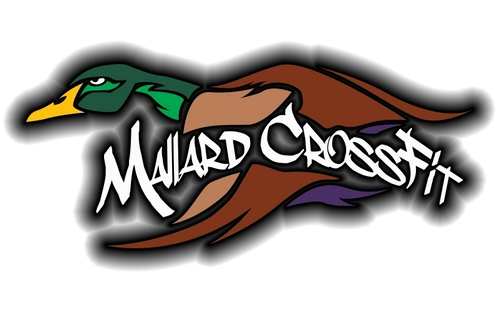The main concern is that the ratio does not take into account changes in accounting reporting rules. For example, recent changes in the calculation of earnings under the GAAP distort the ratio and provide an overly pessimistic view of future earnings. Finally, using the CAPE ratio as a broad-market benchmarking tool can result in inaccuracies due to mega-cap companies. In cap-weighted indices, significant movement at the top can skew any P/E metric. While many financial analysts lauded the creation of the Shiller P/E ratio, it gained even more notoriety when it correlated with both the Dot-Com Bubble and the Great Recession.
However, the CAPE ratio has been higher than 25 and even 30 since then in the mid-2010s and early 2020s, and we haven’t seen that kind of market crash. While active investors may want to make the CAPE ratio one of the metrics they use, it’s less important if you’re planning to buy and hold for decades, since you’ll be able to ride out down markets. The previous occurrences were before the stock market crash of 1929 and before the bursting of the dot-com bubble. Once again, this high CAPE was the sign of an impending crash, in this case the Great Recession. Unlike the traditional price to earnings ratio (P/E), the CAPE ratio attempts to eliminate fluctuations that can skew corporate earnings, i.e. “smoothen” the reported earnings of companies.
- Similar to the P/E ratio, the CAPE ratio aims to indicate whether a stock is undervalued or overvalued.
- However, the answer you get might not always represent the reality of the situation.
- Many investors use P/E as a quick metric for understanding relative value; however, the CAPE ratio might be a more accurate way to gauge whether a stock is over- or under-valued.
- The ratio is generally applied to broad equity indices to assess whether the market is undervalued or overvalued.
- While there is significant criticism (and controversy) surrounding the methodology by which inflation is measured, the Consumer Price Index (CPI) remains the most common measure of inflation in the U.S.
- The problem of using static figures in pursuit of dynamic insights about a stock is one famed investor Benjamin Graham discussed at length in his 1934 book, Security Analysis.
70% of retail client accounts lose money when trading CFDs, with this investment provider. Please ensure you understand how this product works and whether you can afford to take the high risk of losing money. Generally, relying on one-year alpari review earnings doesn’t accurately predict long-term company financial performance. As a result, John Y. Campbell and Robert Shiller stated that future earnings could be expected using a long-term moving average of actual profits.
What are the Limitations to the CAPE Ratio?
To use the CAPE ratio in your trading, you’d divide your chosen company’s latest share price by its average earnings over the previous ten years. If it is a low CAPE ratio, you could consider buying the stock in the expectation that it will rise in value over the longer term. And if it is a high CAPE ratio, you would need to consider the company’s fundamentals before you opened a position, as there is the possibility the stock price could fall if market participants are unwilling to support its inflated price. The CAPE ratio is calculated by dividing a company’s stock price by the average of the company’s earnings over a ten-year period and adjusting it for inflation. In June 2016, Jeremy Siegel of the Wharton School published a paper in which he said that forecasts of future equity returns using the CAPE ratio might be overly pessimistic because of changes in the way GAAP earnings are calculated. In taking a decade’s worth of EPS data and adjusting for inflation and earnings, the new EPS reflects the entirety of the economic cycle.
The ratio is used to measure a company’s profitability under different economic influences. Profit peaks and troughs are extremely common as consumer spending habits change significantly in periods of economic boom or bust. Taking these swings into account can help show whether a company will perform in the long run and is worth investing in. The CAPE ratio is a comparison of a stock or index price to its total earnings, which is used to tell whether its’s over or undervalued. It’s an extension of the traditional price-to-earnings ratio (P/E) that monitors a ten-year period to account for variations in profitability due to economic cycles. The CAPE ratio for the S&P 500 index is considered one potential indicator of a future stock market crash.
To get a true picture of the P/E of a company, investors need to consider the entire economic cycle. It’s also worth noting that, accounting practices have changed since the CAPE ratio was created – making historical comparisons difficult as earnings are no longer calculated in the same way. Due to yield’s impact on market value, investors should consider this metric; otherwise, they may get an inaccurate image of the company’s performance in the short- or long-term. The risk-free rate could impact the company’s value, so investors must consider this metric to get a better image of the company’s financial performance in the long term. Investors interested in getting knowledge of the long-term company financial performance could find that the cape ratio is a better metric to answer their questions.
Why is the CAPE ratio important for investors?
This can skew outcomes when looking at growth stocks and fast-moving upstarts. For instance, a company might have a sizeable CAPE ratio during the 10-year run-up to market domination. However, this aggregated EPS might not represent a realistic expectation for the company’s future short-term outlook as it plateaus. The CAPE ratio is used to forecast the likely earnings of a company or index over the next 20 years. The theory is that the lower the value of the ratio, the higher the return from equities over the next two decades as the stocks come into line with their true value. And the higher the value of the ratio, the less likely equities are to achieve oversized returns, as their stock prices are inflated already.
The CAPE ratio is a popular way of assessing how long-term business cycles impact a company’s valuation. Discover the difference between the CAPE ratio and P/E ratio, and how to calculate the CAPE ratio for stocks and indices. It is mainly used to predict future stock returns over the next 10 to 20 years, smoothing out fluctuations and the business cycle’s impact on a company’s profit.
Shiller PE (CAPE Ratio)
It tells you how much dividend payments shareholders will receive in the future, based on the market value of that share. Even if a financial analyst can find ample information from the past ten years to compare two companies, they can’t get an accurate image of which company would perform better coinmama exchange review financially in the future. Investors should invest in LYC company as its cape ratio is lower than its P/E ratio, which usually increases its value in the market. When a company has a lower ratio, investors might consider purchasing the stock as its value will increase in the long term.
In economics, the term “inflation” is a measure of the rate of change in the pricing of goods and services within a country across a specified time frame. Unfortunately, this makes accurate historical comparisons bitit review more challenging because profits aren’t continuously computed similarly. This ratio helps investors to decide whether to buy or sell stock and, hence, change their investment strategies accordingly.
There is debate over how accurate the CAPE ratio is, especially when used with individual stocks. Even with market indexes, some believe it isn’t a good predictor of returns and that it presents an overly pessimistic outlook. But as with any metric, you shouldn’t rely on a CAPE ratio alone to decide how to invest. The CAPE ratio allows the assessment of a company’s profitability over different periods of an economic cycle. The ratio also considers economic fluctuations, including the economy’s expansion and recession.
The two suggested ten-year earnings were strongly correlated with returns for the next 20 years. For instance, Benjamin Graham recommended the necessity to use an average of past earnings in his book, Security Analysis. Other experts have questioned whether the historic CAPE ratio average, around 17 for the S&P 500, is meaningful today, given changes in accounting rules, interest rates, demographics and other factors. Suppose a company, TYL, produces a popular product, increasing its market share in the industry. However, the government noticed that TYL’s manufacturing activities pollute the environment, impacting the health of nearby citizens. The dividend yield formula figures out how much a company pays in dividends each year compared to its market value.
Essentially, it provides a broader view of a company’s profitability by smoothing out the cyclical effects of the economy. Financial Analysts use the Cyclically-Adjusted Price to Earnings Ratio to assess long-term financial performance, while isolating the impact of economic cycles. The CAPE ratio most often serves as a market indicator, so the share price refers to the market price of a stock market index. However, taking the average of a company’s reported EPS figures in the past ten years neglects a critical factor that affects the financial performance of all corporations, which is inflation. There is believed to be a relationship between the CAPE ratio and future earnings. Shiller concluded that lower ratios indicate higher returns for investors over time.










